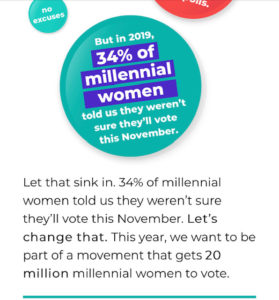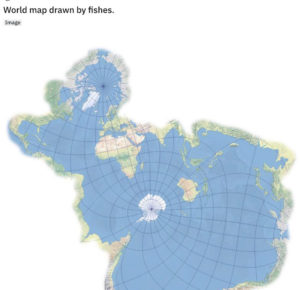Contemplative Epistemology
January 28, 2020One spirit, at work in each, becomes their guide, led by more than mere human communication. -Day by Day with St. Francis
‘The primacy of love allows our knowing to be much humbler and more patient and helps us to recognize that other traditions—and other people—have much to teach us, and there is also much we can share with them. This stance of honest self-knowledge and deeper interiority, with the head (Scripture), the heart (Experience), and the body (Tradition) operating as one.
Contemplation allows us to see things in their wholeness and thus with respect (re-spect means to see a second time).
Only at a deeper level of contemplation do we begin to see the correlation between how we do anything and how we do everything else. We take the moment in front of us much more seriously and respectfully. We catch ourselves out of the corner of our eye, as it were, and our ego games are exposed and diminished.
Such knowing does not contradict the rational, but it’s much more holistic and inclusive. It might be called trans-rational although many think it is pre-rational. It goes where the rational mind cannot go, but then comes back to honor the rational, too…“contemplative epistemology”—a contemplative theory of how we know what we know.’
-Fr. Richard Rohr
Mary Louise Kelly
[Former Pen America Center president Francine Prose’s appreciation of Mary Louise Kelly in The Guardian.]
‘Mary Louise Kelly stood her ground…supporters of accountability journalism have the occasion to celebrate the courage of DC’s elite political journalists – Too many political reporters choose to pull their punches to maintain access.’
One brave political reporter raises the bar for her timid colleagues
Mary Louise Kelly stood her ground.
Kelly, who is the host of NPR’s All Things Considered and a veteran national security correspondent, made the best of her on-the-record interview with Secretary of State Mike Pompeo by posing tough questions and calling him out when he answered with lies.
Then, after he summoned her to his office, tried unsuccessfully to challenge her competence, and cursed her out, she went public.
It’s not often that supporters of accountability journalism have the occasion to celebrate the courage of Washington’s elite political journalists – and from NPR, no less. Too many political reporters choose to pull their punches to maintain access.
-Dan Froomkin/Press Watchers, An Intervention for Political Journalism
What is water?
“Great reminder that the way we look at the world is biased by where we look at it from.” -Dr. Joe Hanson
Why Are We Polarized?
Why Democrats Still Have to Appeal to the Center, but Republicans Don’t
Polarization has changed the two parties — just not in the same way.
By Ezra Klein
Mr. Klein is the author of “Why We’re Polarized.
American politics has been dominated by the Democratic and Republican Parties since the Civil War. That gives us the illusion of stability — that today’s political divisions cut roughly the same lines as yesteryear.
But in recent decades, the two parties have been changing, and fast. Those changes are ideological — the Democratic Party has moved left, and the Republican Party has moved right. But more fundamentally, those changes are compositional: Democrats have become more diverse, urban, young and secular, and the Republican Party has turned itself into a vehicle for whiter, older, more Christian and more rural voters.
This is the root cause of intensifying polarization: Our differences, both ideological and demographic, map onto our party divisions today in ways they didn’t in the past. But the changes have not affected the parties symmetrically.
Put simply, Democrats can’t win running the kinds of campaigns and deploying the kinds of tactics that succeed for Republicans. They can move to the left — and they are — but they can’t abandon the center or, given the geography of American politics, the center-right, and still hold power. Democrats are modestly, but importantly, restrained by diversity and democracy. Republicans are not.
Let’s start with diversity. Over the past 50 years, the Democratic and Republican coalitions have sorted by ideology, race, religion, geography and psychology. Not all sorting is the same. Sorting has made Democrats more diverse and Republicans more homogeneous. This is often played as a political weakness for Democrats. They’re a collection of interest groups, a party of list makers, an endless roll call. But diversity has played a crucial role in moderating the party’s response to polarization.
Appealing to Democrats requires appealing to a lot of different kinds of people with different interests. Republicans are overwhelmingly dependent on white voters. Democrats are a coalition of liberal whites, African-Americans, Hispanics, Asians and mixed-race voters. Republicans are overwhelmingly dependent on Christian voters. Democrats are a coalition of liberal and nonwhite Christians, Jews, Muslims, New Agers, agnostics, Buddhists and so on. Three-quarters of Republicans identify as conservative, while only half of Democrats call themselves liberals — and for Democrats, that’s a historically high level.
As a result, winning the Democratic primary means winning liberal whites in New Hampshire and traditionalist blacks in South Carolina. It means talking to Irish Catholics in Boston and atheists in San Francisco. It means inspiring liberals without arousing the fears of moderates. It’s important preparation for the difficult, pluralistic work of governing, in which the needs and concerns of many different groups must be balanced against one another.
The Democratic Party is not just more diverse in who it represents; it’s also more diverse in whom it listens to. A new Pew survey tested Democratic and Republican trust in 30 different media sources, ranging from left to right. Democrats trusted 22 of the 30 sources, including center-right outlets like The Wall Street Journal. Republicans trusted only seven of the 30 sources, with PBS, the BBC and The Wall Street Journal the only mainstream outlets with significant trust. (The other trusted sources, in case you were wondering, were Fox News, Sean Hannity, Rush Limbaugh and Breitbart.)
Fox News, in particular, holds a unique centrality in Republican media: Sixty-five percent of Republicans say they trust it, more than twice as many as trust any other outlet, and 60 percent of Republicans said they relied on Fox News in the previous week — again, more than twice the proportion who relied on any other news brand. Among Democrats, by contrast, the most-trusted and frequently consulted outlet was CNN.
The Democratic Party’s informational ecosystem combines mainstream sources that seek objectivity, liberal sources that push partiality and even some center-right sources with excellent reputations. On any given question, liberals trust in sources that pull them left and sources that pull them toward the center, in sources oriented toward escalation and sources oriented toward moderation, in sources that root their identity in a political movement and in sources that carefully tend a reputation for being antagonistic toward political movements.
There is no similar diversity in the Republican Party’s trusted informational ecosystem, which is heavily built around self-consciously conservative news sources. There should be a check on this sort of epistemic closure. A party that narrows the sources it listens to is also narrowing the voters it can speak to. And political parties ultimately want to win elections. Lose enough of them, enough times, and even the most stubborn ideologues will accept reform. Democracy, in other words, should discipline parties that close their informational ecosystems. But America isn’t a democracy.
Republicans control the White House, the Senate, the Supreme Court and a majority of governorships. Only the House is under Democratic control. And yet Democrats haven’t just won more votes in the House elections. They won more votes over the last three Senate elections, too. They won more votes in both the 2016 and 2000 presidential elections. But America’s political system counts states and districts rather than people, and the G.O.P.’s more rural coalition has a geographic advantage that offsets its popular disadvantage.
To win power, Democrats don’t just need to appeal to the voter in the middle. They need to appeal to voters to the right of the middle. When Democrats compete for the Senate, they are forced to appeal to an electorate that is far more conservative than the country as a whole. Similarly, gerrymandering and geography means that Democrats need to win a substantial majority in the House popular vote to take the gavel. And a recent study by Michael Geruso, Dean Spears and Ishaana Talesara calculates that the Republican Party’s Electoral College advantage means “Republicans should be expected to win 65 percent of presidential contests in which they narrowly lose the popular vote.”
The Republican Party, by contrast, can run campaigns aimed at a voter well to the right of the median American. Republicans have lost the popular vote in six of the last seven presidential elections. If they’d also lost six of the last seven presidential elections, they most likely would have overhauled their message and agenda. If Trump had lost in 2016, he — and the political style he represents — would have been discredited for blowing a winnable election. The Republican moderates who’d counseled more outreach to black and Hispanic voters would have been strengthened.
Instead, Republicans are trapped in a dangerous place: They represent a shrinking constituency that holds vast political power. That has injected an almost manic urgency into their strategy. Behind the party’s tactical extremism lurks an apocalyptic sense of political stakes. This was popularized in the infamous “Flight 93 Election” essay arguing that conservatives needed to embrace Trump, because if he failed, “death is certain.” You could hear its echoes in Attorney General William P. Barr’s recent speech, in which he argued that “the force, fervor and comprehensiveness of the assault on religion” poses a threat unlike any America has faced in the past. “This is not decay,” he warned, “it is organized destruction.”
This is why one of the few real hopes for depolarizing American politics is democratization. If Republicans couldn’t fall back on the distortions of the Electoral College, the geography of the United States Senate and the gerrymandering of House seats — if they had, in other words, to win over a majority of Americans — they would become a more moderate and diverse party. This is not a hypothetical: The country’s most popular governors are Charlie Baker in Massachusetts and Larry Hogan in Maryland. Both are Republicans governing, with majority support, in blue states.
We could do away with the Electoral College and gerrymandering; pass proportional representation and campaign finance reform; make voter registration automatic and give Washington, D.C., and Puerto Rico the political representation they deserve. But precisely because the Republican Party sees deepening democracy as a threat to its future, it will use the power it holds to block any moves in that direction.
The alternative to democratizing America is scarier than mere polarization: It is, eventually, a legitimacy crisis that could threaten the very foundation of our political system. By 2040, 70 percent of Americans will live in the 15 largest states. That means 70 percent of America will be represented by only 30 senators, while the other 30 percent of America will be represented by 70 senators.
It is not difficult to envision an America where Republicans consistently win the presidency despite rarely winning the popular vote, where they typically control both the House and the Senate despite rarely winning more votes than the Democrats, where their dominance of the Supreme Court is unquestioned and where all this power is used to buttress a system of partisan gerrymandering, pro-corporate campaign finance laws, strict voter identification requirements and anti-union legislation that further weakens Democrats’ electoral performance. Down that road lies true political crisis.
In the meantime, though, it’s important to recognize the truth about our system: Both parties have polarized, but in very different ways, and with very different consequences for American politics.
#





